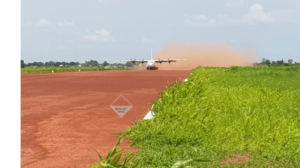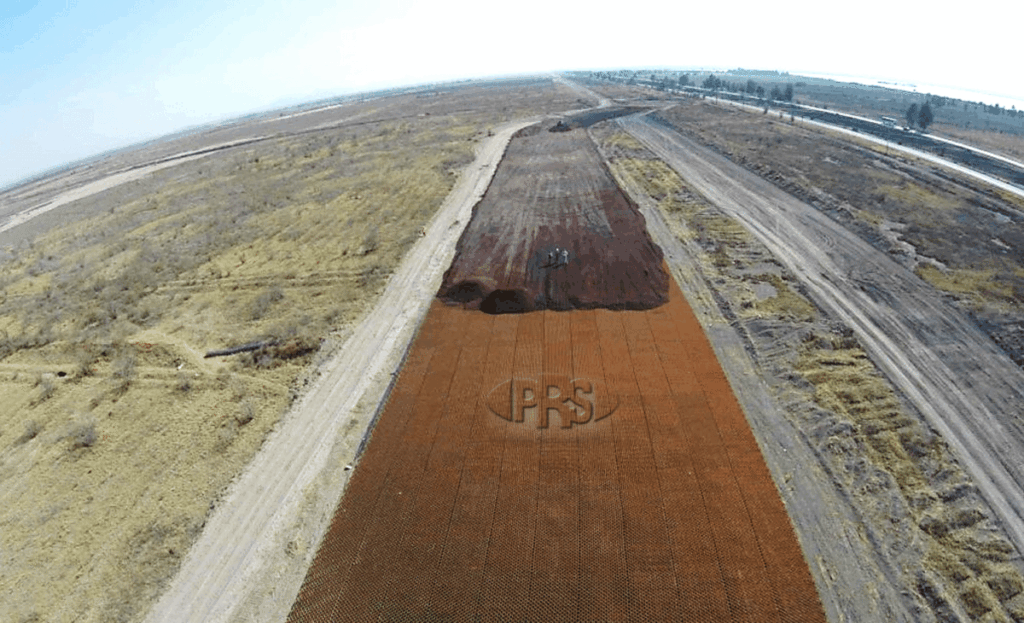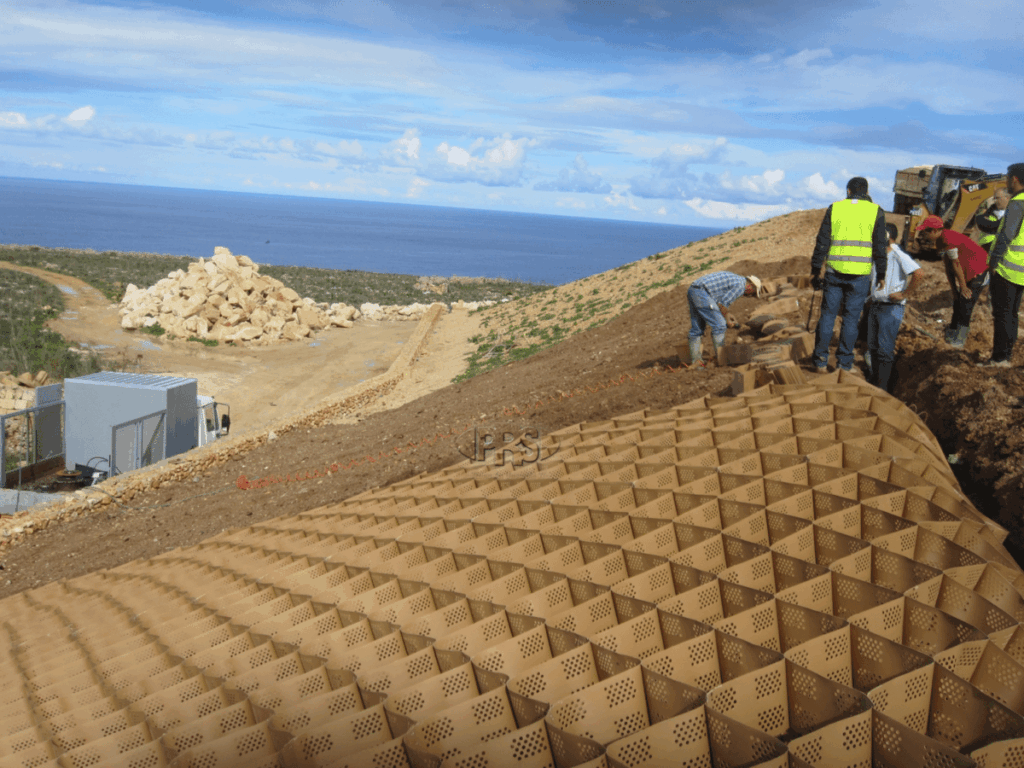UNOPS (United Nations Office of Project Services) needed to rehabilitate the Rubkona airfield: taxiway, apron and access roads (including drainage) as well as double the runway size to accommodate larger aircraft (e.g., C130 Hercules). This was a lifesaving mission to guarantee steady airborne deliveries of essential aid to millions of people vulnerable to insecurity, displacement, food shortages and disease.
In a competitive international tender the UN chose the PRS solution. The PRS Engineering detailed pavement analysis and design was a critical factor in their UN decision. The report proved how Neoloy Tough-Cells were the optimized solution for the project conditions:
The airfield design consists of a formation level and in-situ material roadbed. The Neoloy Tough-Cell were installed over the entire area of the airfield with significant overfill. The airstrip was basically constructed from sand, with somewhat higher quality imported Murram sandy-gravel infill limited to the wearing course.

The optimized solution required for reliable heavy-duty use was based on the following geocell engineering parameters:
The high reinforcement factor of Neoloy Tough-Cells optimized the design of the airfield. Local soil was used for structural infill, while minimizing the need for imported gravel. This not only reduced construction time, it also made the project very cost-effective, sustainable and low maintenance.
In terms of manufacturing and logistics, PRS was able to deliver the entire quantity of several hundred thousand sqm within 10 weeks to Mombasa Port to meet the UN’s urgent needs.
WSP’s design for the Rubkona airstrip, UNOPS
Click to read the full article:

